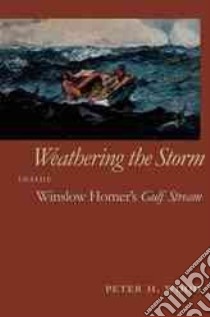Weathering the Storm - 9780820326252
Un libro in lingua di Wood Peter H. Winslow Homer edito da Univ of Georgia Pr, 2004
- € 20.90
- Il prezzo è variabile in funzione del cambio della valuta d’origine
There is more to this stark masterpiece, says Peter H. Wood, a historian and an authority on images of blacks in Homer's work. To understand the painting in less noticed but more meaningful ways, says Wood, we must dive more deeply into Homer's past as an artist and our own past as a nation. Looking at The Gulf Stream and the development of Homer's social conscience in ways that traditional art history and criticism do not allow, Wood places the picture within the tumultuous legacy of slavery and colonialism at the end of the nineteenth century.
Viewed in light of such events as the Spanish American War, the emergence of Jim Crow practices in the South, and the publication of Rudyard Kipling's epochal poem ?The White Man's Burden,” The Gulf Stream takes on deeper layers of meaning. The storm on the horizon, the sharks and flying fish in the water, the sugarcane stalks protruding from the boat's hold---these are just some of the elements in what Wood reveals to be a richly symbolic tableau of the Black Atlantic world, linking the histories of Africa, the Caribbean, and the United States.
By examining the ?present” that shaped The Gulf Stream more than a century ago, and by resurrecting half-forgotten elements of the ?past” that sustain the painting's abiding mystery and power, Wood suggests a promising way to use history to comprehend art and art to fathom history.
Informazioni bibliografiche
- Titolo del Libro in lingua: Weathering the Storm
- Sottotitolo: Inside Winslow Homer's Gulf Stream
- Lingua: English
- Autori : Wood Peter H. Winslow Homer
- Editore: Univ of Georgia Pr
- Collana: Univ of Georgia Pr (Hardcover)
- Data di Pubblicazione: 01 Gennaio '04
- Genere: ART
- Argomenti : African Americans in art Social problems in art Painting, American 19th century Themes, motives
- Pagine: 128
- Dimensioni mm: 209 x 146 x 19
- ISBN-10: 0820326259
- EAN-13: 9780820326252


